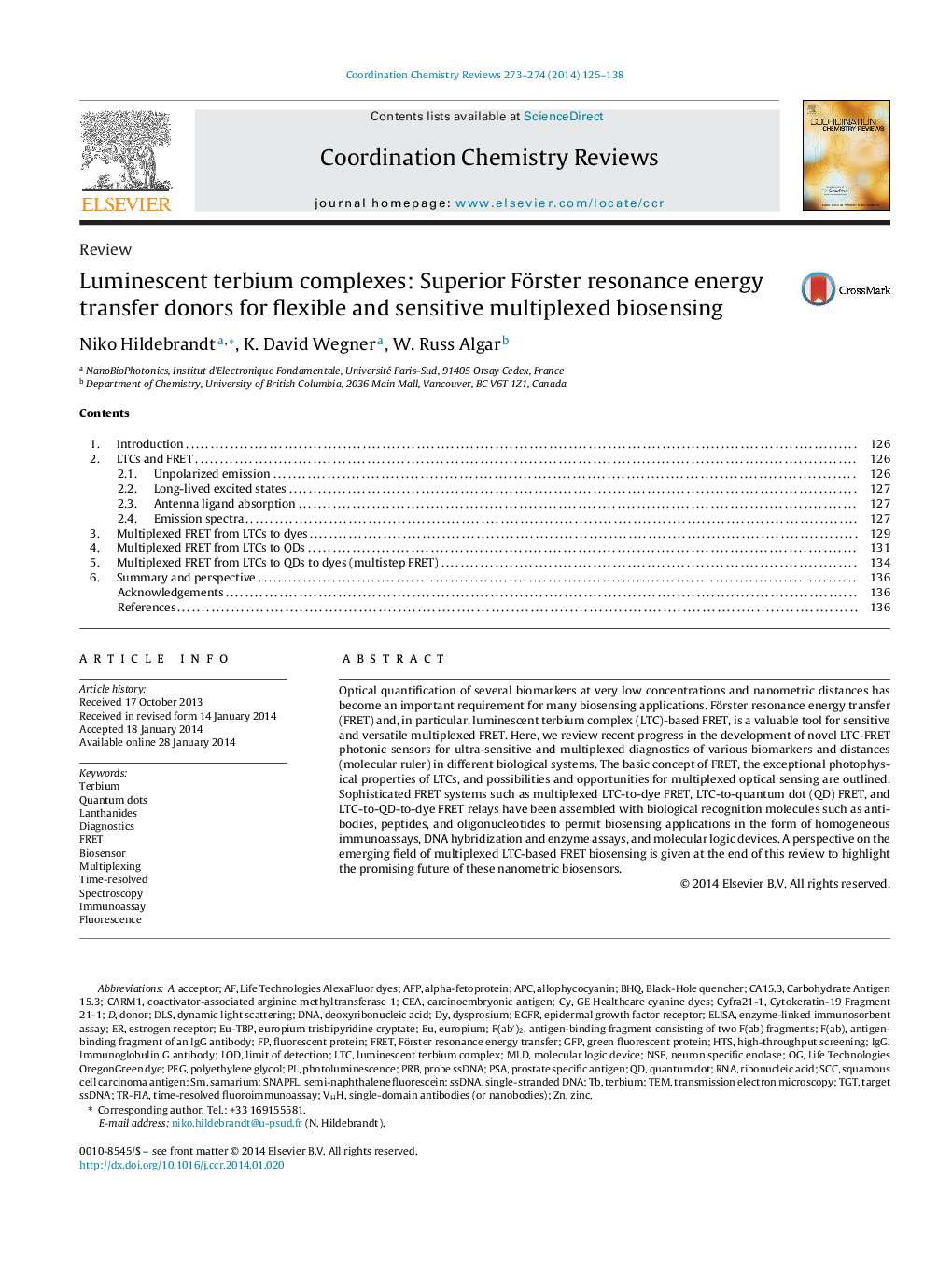| Article ID | Journal | Published Year | Pages | File Type |
|---|---|---|---|---|
| 1300958 | Coordination Chemistry Reviews | 2014 | 14 Pages |
•Multidimensional multiplexed FRET from terbium complexes to dyes and quantum dots.•Multiplexed terbium-to-quantum dot FRET for spectroscopic ruler applications.•Sensitive and multiplexed homogeneous immunoassays in low-volume serum samples.•Homogeneous FRET-immunoassays using quantum dots and single-domain antibodies.•Multistep FRET relays for biosensing and molecular ruler devices.
Optical quantification of several biomarkers at very low concentrations and nanometric distances has become an important requirement for many biosensing applications. Förster resonance energy transfer (FRET) and, in particular, luminescent terbium complex (LTC)-based FRET, is a valuable tool for sensitive and versatile multiplexed FRET. Here, we review recent progress in the development of novel LTC-FRET photonic sensors for ultra-sensitive and multiplexed diagnostics of various biomarkers and distances (molecular ruler) in different biological systems. The basic concept of FRET, the exceptional photophysical properties of LTCs, and possibilities and opportunities for multiplexed optical sensing are outlined. Sophisticated FRET systems such as multiplexed LTC-to-dye FRET, LTC-to-quantum dot (QD) FRET, and LTC-to-QD-to-dye FRET relays have been assembled with biological recognition molecules such as antibodies, peptides, and oligonucleotides to permit biosensing applications in the form of homogeneous immunoassays, DNA hybridization and enzyme assays, and molecular logic devices. A perspective on the emerging field of multiplexed LTC-based FRET biosensing is given at the end of this review to highlight the promising future of these nanometric biosensors.
Graphical abstractFigure optionsDownload full-size imageDownload high-quality image (441 K)Download as PowerPoint slide
